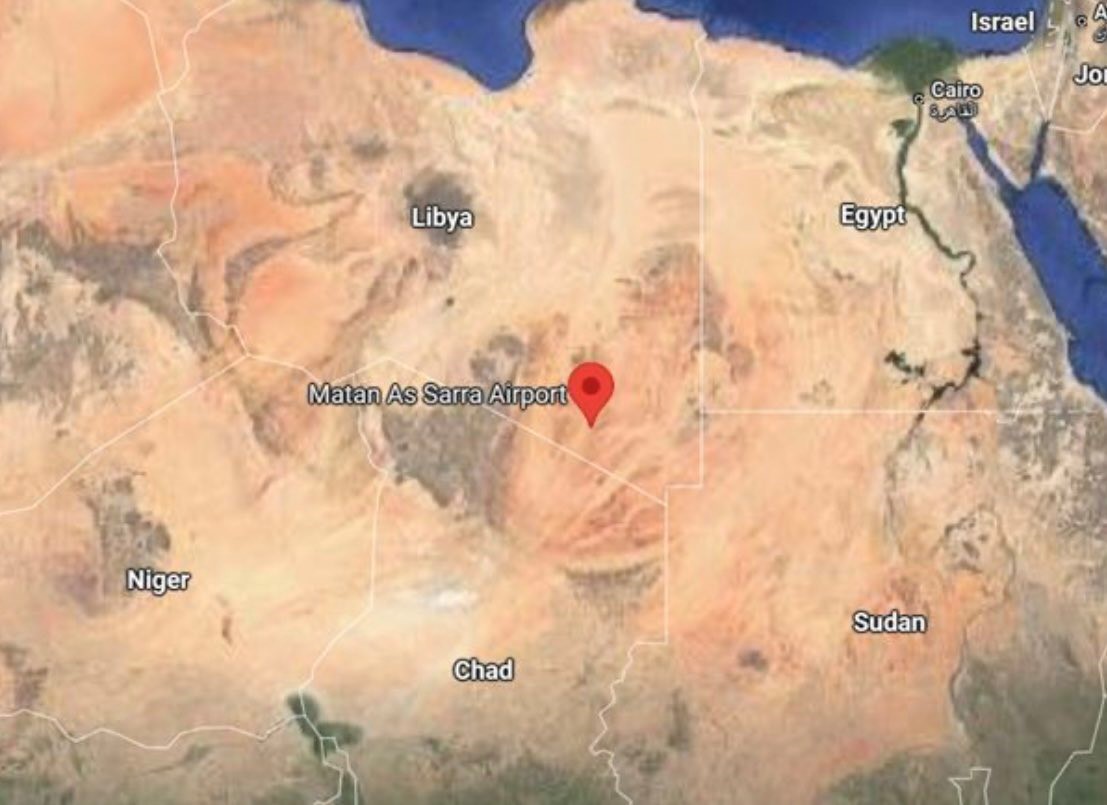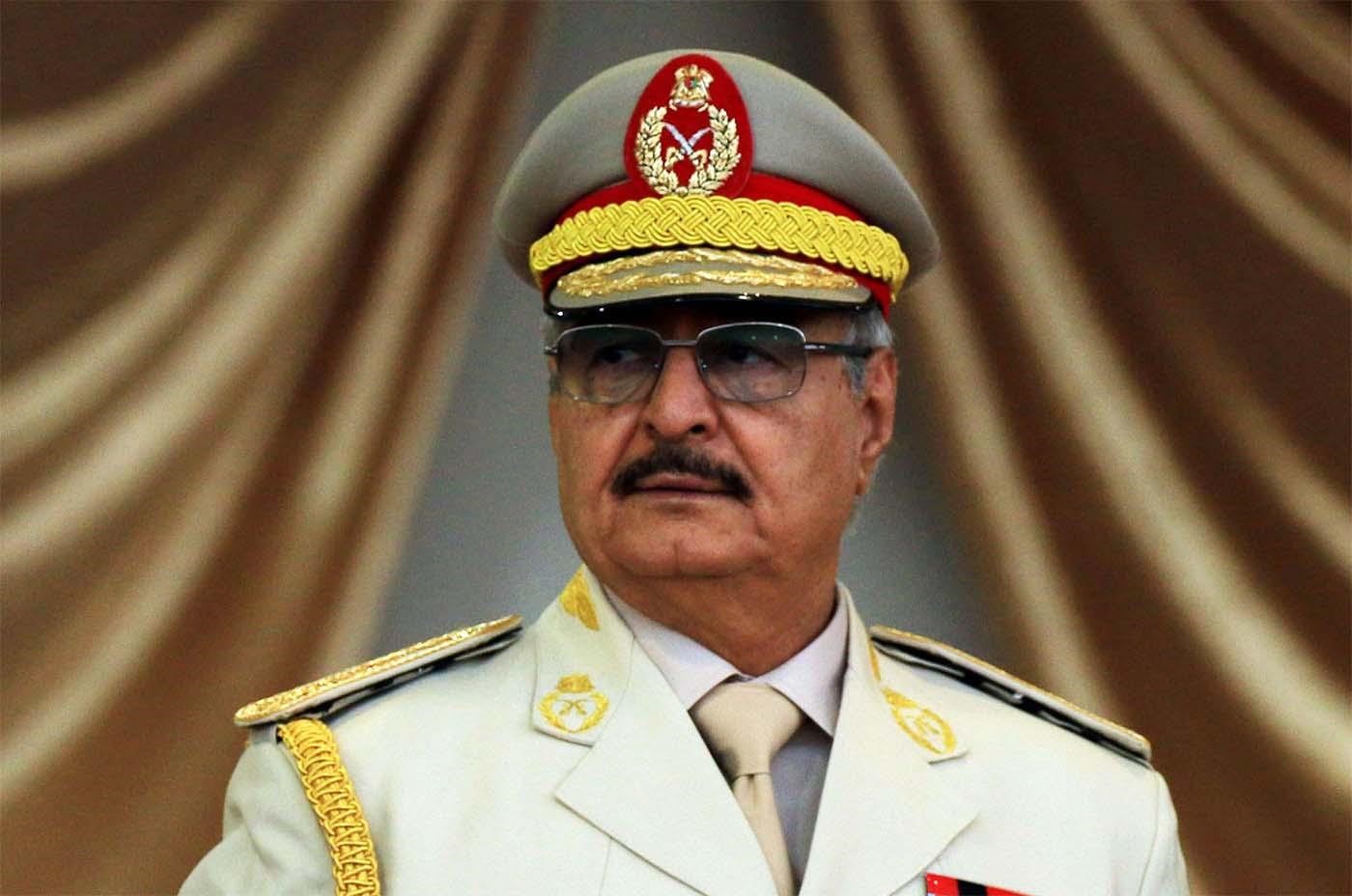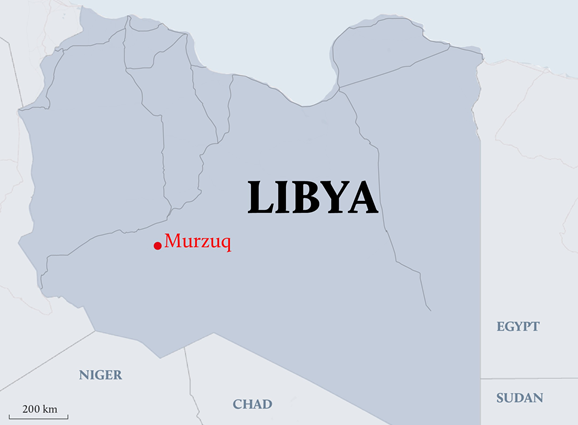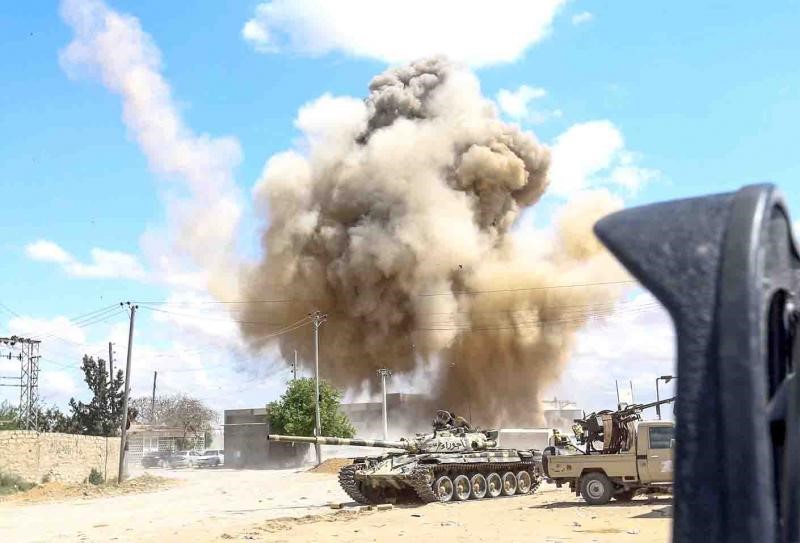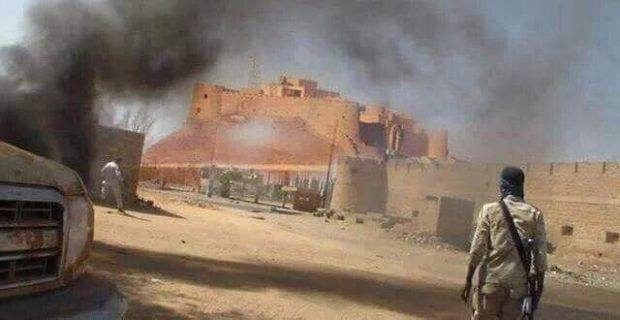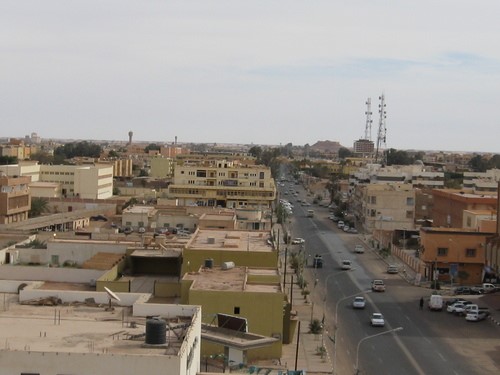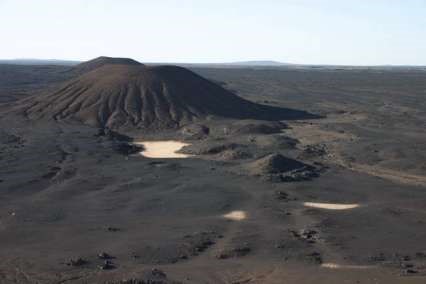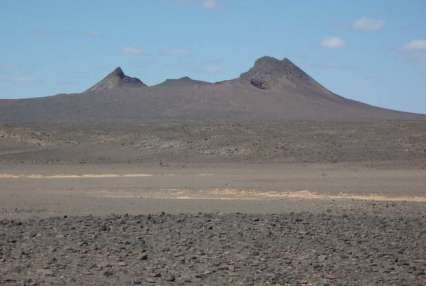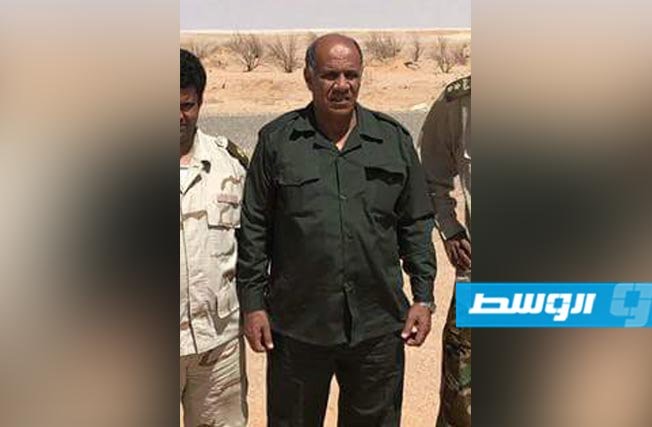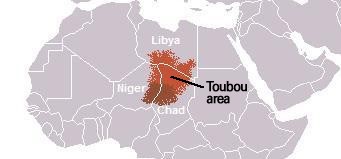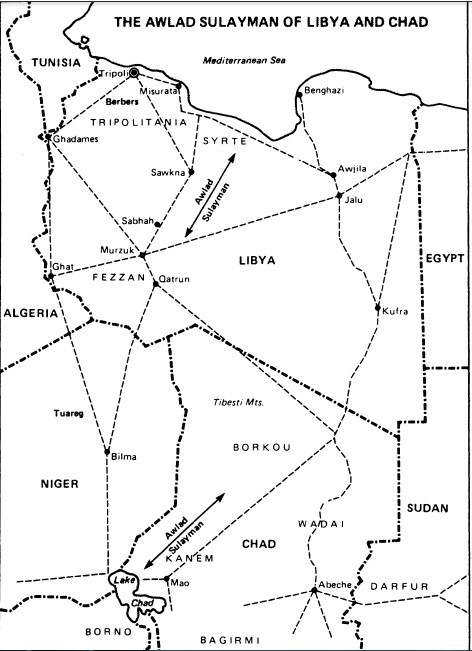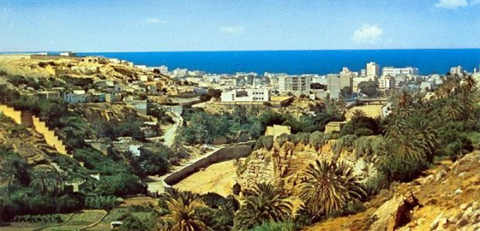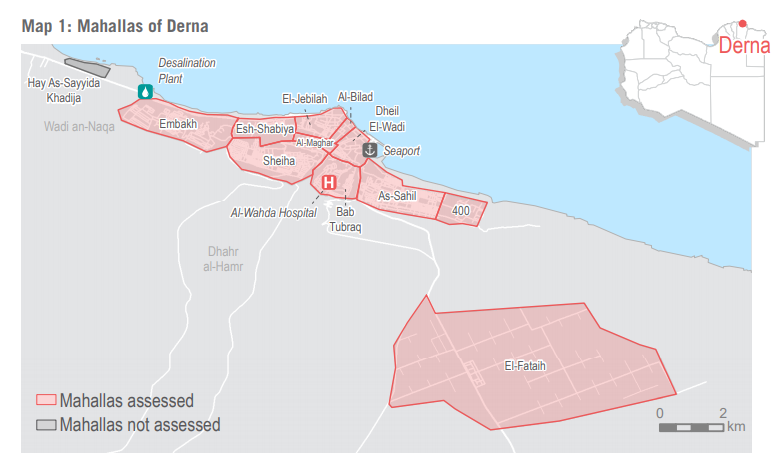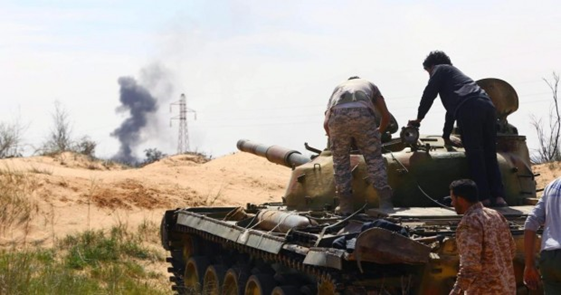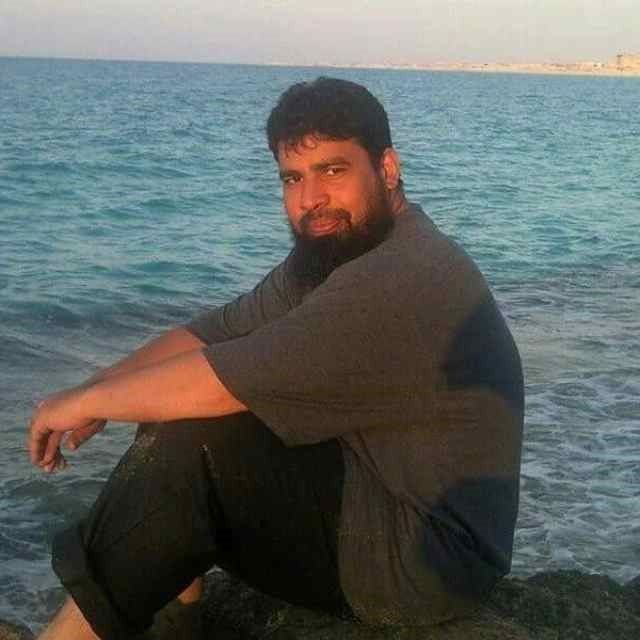Andrew McGregor
Eurasia Daily Monitor, Jamestown Foundation, Washington DC
April 17, 2025
Executive Summary:
- Russia’s rehabilitation of an abandoned airbase in the Libyan desert offers an opportunity to create a reliable line of supply to Russian forces operating in West Africa.
- A Russian military presence close to the borders of Egypt, Sudan, and Chad could make Moscow a player in regional politics and security activities.
- Moscow continues to feel its way through a complex system of regional rivalries and alliances that leaves it open to counter-moves by interested parties in the West.
One of former Libyan leader Mu’ammar Qaddafi’s greatest foreign policy failures was undoubtedly his 1980s attempt to use his Soviet-armed military to spread Libyan rule and influence in the African Sahel region. Now, Russia is focused on a similar effort in the Sahel, using the same remote airbase in south-eastern Libya that Qaddafi used to launch his offensive into neighboring Chad. The airbase at Matan al-Sarra is the latest addition to a network of Libyan bases hosting Russian military operations and arms shipments. These include al-Khadim, al-Jufra, Brak al-Shati, al-Wigh, Tamanhint, and al-Qardabiya (Middle East Eye, July 10, 2023; Libya Observer, January 15).
Matan al-Sarra is close to the historically strategic Kufra region, a series of small oases (see Terrorism Monitor, February 23, 2012, April 6, 2018; May 5, 2011). Today, Kufra is an important staging point for illegal African migrants making for the Mediterranean coast and ultimately Europe (Libyan News Agency, April 7).
Kufra and the rest of south-eastern Libya is now controlled by self-appointed “Field Marshal” Khalifa Haftar, commander of the so-called “Libyan National Army” (LNA, a.k.a. Libyan Arab Armed Forces). LNA is a composite force of militias, mercenaries, tribal groups, and more formal military formations supporting one of the two rival governments in Libya, the Tobruk-based Libyan House of Representatives (MENA Research Center, August 19, 2024; AIS Special Report, November 14, 2017).
Haftar’s 2020 Russian-backed attempt to seize Tripoli and bring Libya under his sole control with the aid of Wagner Group mercenaries was a failure, owing in part to the Government of National Accord’s (GNA) effective use of Turkish drones (see EDM, June 11, 2020, March 12, 2024). Rather than drop his alliance with Russia, Haftar instead decided to intensify relations with Moscow in the hope of obtaining more advanced weapons and other military materiel. Permitting Russian use of the airbase in south-eastern Cyrenaïca is part of this process.
 Mobile Chadian Troops in the Toyota War, 1988
Mobile Chadian Troops in the Toyota War, 1988
Before receiving support from Moscow for his military campaigns in Libya, Haftar had a history of cooperating with the United States. In 1987, after losing a military campaign as the then-commander of Libyan forces in Chad, Haftar was captured and disowned by Qaddafi (Libya Tribune, October 29, 2022; al-Arabiya, May 24, 2014). Valuable specimens of Soviet aircraft and radar abandoned by the Libyans were recovered from the battlefield by a US Special Operations group, temporarily damaging Libyan relations with Moscow (ARSOF, March 2022). By 1990, Haftar had agreed to move to the United States with 300 other Libyan prisoners, where he became a U.S. citizen and alleged asset for the Central Intelligence Agency (CIA) in its efforts to overthrow Qaddafi, who continued to be backed by the Soviet Union until its collapse in 1991 (Libya Tribune, October 31, 2022; France24.com, May 19, 2014; al-Arabiya, May 24, 2014). Haftar returned to Libya in 2011, where he established a power base in Cyrenaïca against the internationally recognized Tripoli-based GNA, which controls most of northwestern Libya (Tripolitania) with the military assistance of Türkiye.
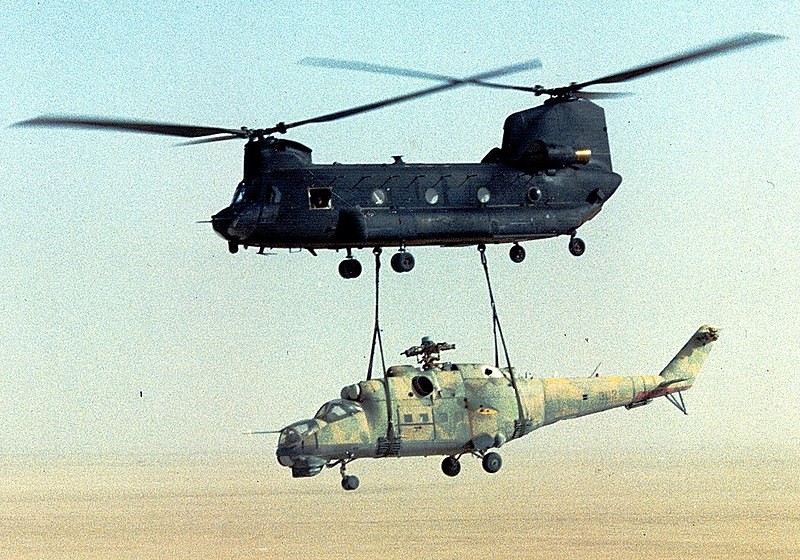 US Chinook Slings an Abandoned Russian-Made Libyan Mi-24 Hind from the Chadian Desert, June 11, 1988
US Chinook Slings an Abandoned Russian-Made Libyan Mi-24 Hind from the Chadian Desert, June 11, 1988
The new six square kilometer (2.3 square mile) base at Matan al-Sarra will provide a refueling stop for Russian aircraft heading into areas of West Africa where the Russian Africa Corps is active. It is located close to the Egyptian and Sudanese borders. Most importantly, the base lies just north of Libya’s border with Chad, the latest target for Russian influence since the recent withdrawal of French and U.S. military forces stationed there. Chad’s discontent with the West follows sustained Russian influence operations and the perceived inability of its Western allies to provide effective military aid in the struggle against regional Islamist insurgencies (see EDM, June 25, 2024). Kremlin objectives in Africa are furthered by an influence and propaganda campaign that uses regional influencers and social media to encourage belief in Russia as a viable and sympathetic alternative to the West for economic and security partnerships (Le Monde, August 6, 2023; RUSI Europe, October 25, 2023; MLM, December 4, 2019).
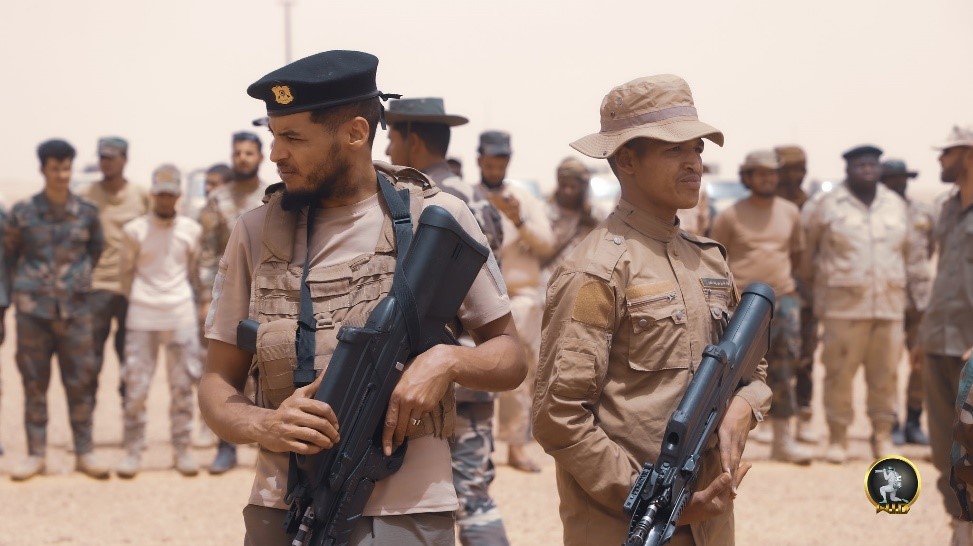 Troops of the LNA’s Tariq bin Zayid Battalion
Troops of the LNA’s Tariq bin Zayid Battalion
Russia began transferring Syrian troops and contractors to Matan al-Sarra last December, where they were engaged alongside Russian personnel in repair and reconstruction efforts at the long-neglected base (The New Arab, January 28). Once a means of projecting Libyan power south into Chad and Sudan, the base lost its raison d’être in 2011 and was abandoned when Qaddafi’s death ended Libyan designs on the African interior. The region around the base, the supply line from Tobruk, and the route to Sudan have been secured by the LNA’s Tariq bin Ziyad Battalion, under the command of one of Khalifa Haftar’s sons, Saddam Haftar (Libya Observer, January 15). With daily temperature highs of over 90 degrees Fahrenheit (32 degrees Celsius) for six months of the year and almost zero annual precipitation, service at the isolated base will likely be considered a hardship posting for Russian personnel.
Russian operatives have been in contact with local tribal communities in the region to form useful alliances (Libya Observer, January 15). The area around Matan al-Sarra is dominated by the Tubu, the so-called “Black nomads of the Sahara” (as described by French soldier and ethnologist Jean Chapelle in his 1958 work Nomades noirs du Sahara) who were displaced from Kufra in the 1840s by their Arab rivals, the Zuwaya. Russian personnel will likely attempt to curry the favor of both groups as aligning with one against the other would create unwanted turmoil and insecurity.
A Russian presence at Matan al-Sarra would provide Moscow with the ability to ship arms to Sudanese or Chadian territory quietly. Even though Moscow has shifted most of its support in the Sudan conflict from the rebel Rapid Support Forces (RSF) to the rival Sudanese Armed Forces/Transitional Sovereignty Council (SAF/TSC), its forces in Libya do not appear to be interfering with Khalifa Haftar’s supply of arms and vehicles to the RSF (Middle East Eye, January 25, 2024; Agenzia Nova [Rome], January 17). Moscow likely wishes to avoid alienating the RSF and lose an opportunity to establish influence in a possible RSF-ruled state in Darfur, the home of most RSF fighters (Sudan Tribune, March 4).
Moscow’s overtures to the Chadian military regime are complicated by Moscow’s attempt to play both sides of the Sudanese conflict (see EDM, July 8, 2024). In late March, the SAF command declared that Chadian airports at N’Djamena and Amdjarras are now “legitimate targets for the Sudanese Armed Forces” following allegations that Chad is using them to forward arms from the United Arab Emirates to RSF forces inside Sudan (Middle East Eye, January 25, 2024; AFP, March 24).
Russian contractors have been heavily involved in gold-mining operations across the border in Sudanese Darfur to help pay for its war against Ukraine and may seek to expand into the Tubu-controlled Kalanga region (450 kilometers (280 miles) south-west of Kufra) in the foothills of the Tibesti Mountains along the border with Chad (Agenzia Nova [Rome], January 23). Chadian forces carried out airstrikes in the region last summer against Chadian rebels gathering there after working as mercenaries in Libya (Libya Security Monitor, August 22, 2024). The strikes came at the same time as Major General Hassan Matuq al-Zama led the LNA’s 128th Reinforced Brigade in operations to secure the border with Niger and Chad and to displace armed groups in Kalanga involved in smuggling and gold mining (Libya Review, August 19, 2024; Atalyar [Madrid], August 21, 2024).
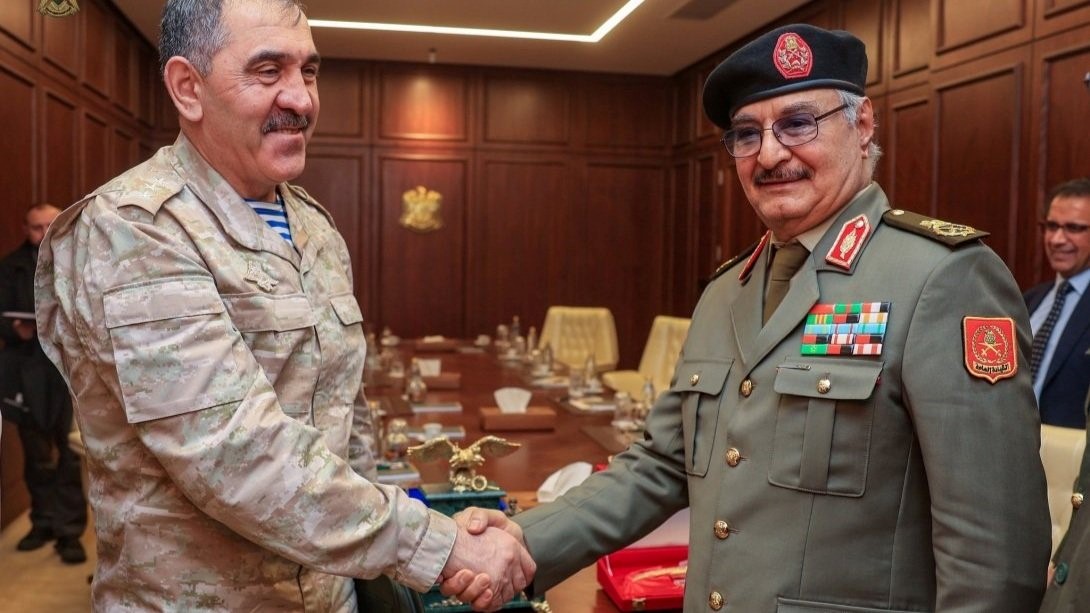 Russian Deputy Defense Minister Yunus-Bek Yevkurov and Field Marshal Khalifa Haftar (Libya Observer)
Russian Deputy Defense Minister Yunus-Bek Yevkurov and Field Marshal Khalifa Haftar (Libya Observer)
The United States Africa Command (AFRICOM) has been working in the last year to develop relations with Khalifa Haftar and encourage military unification in Libya to discourage Libyan partnerships with Russia. In late February, AFRICOM conducted training exercises in Libya involving U.S. B-52H Stratofortress bombers and Libyan military forces representing both rival Libyan governments designed to promote Libyan military unification while simultaneously slowing the growth of Russian influence (Libya Observer, March 4; Agenzia Nova, March 7). The exercise came amid regular contacts between Haftar and Russian deputy defense minister Yunus-Bek Yevkurov (responsible for Russian African Corps operations) and a growing number of Russians stationed at the LNA-controlled Brak al-Shati airbase in central Libya (Defense News, March 14).
Russian operations in Africa continue to be characterized by a certain diplomatic inconsistency that may be due in part to inexperience in the region and unfamiliarity with the motives and methods of their would-be partners. Besides trying to keep a foot in both camps in the Sudan conflict, Moscow continues to attempt to develop relations with the Tripoli-based GNA, which only encourages Khalifa Haftar to leave himself open to U.S. overtures. A failure to make firm and visible commitments makes Kremlin strategic policy in the region a work in progress, susceptible to local manipulation as well as countermoves by Russia’s global rivals.

